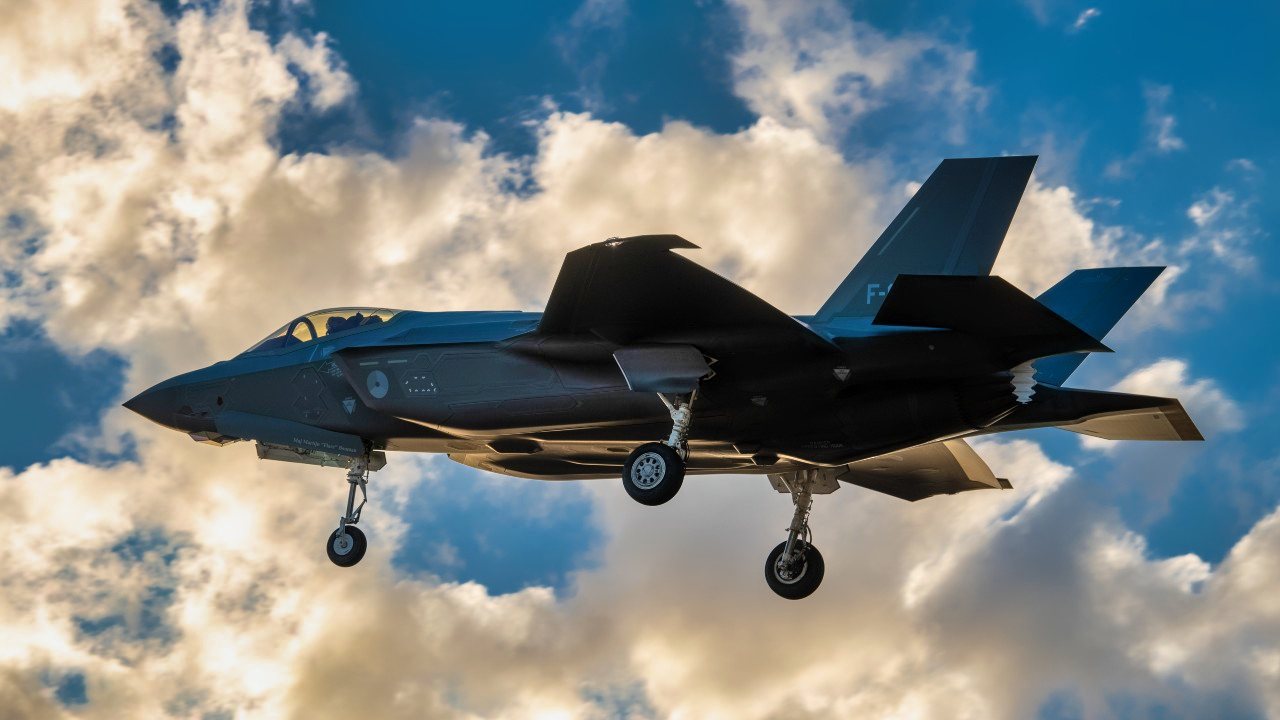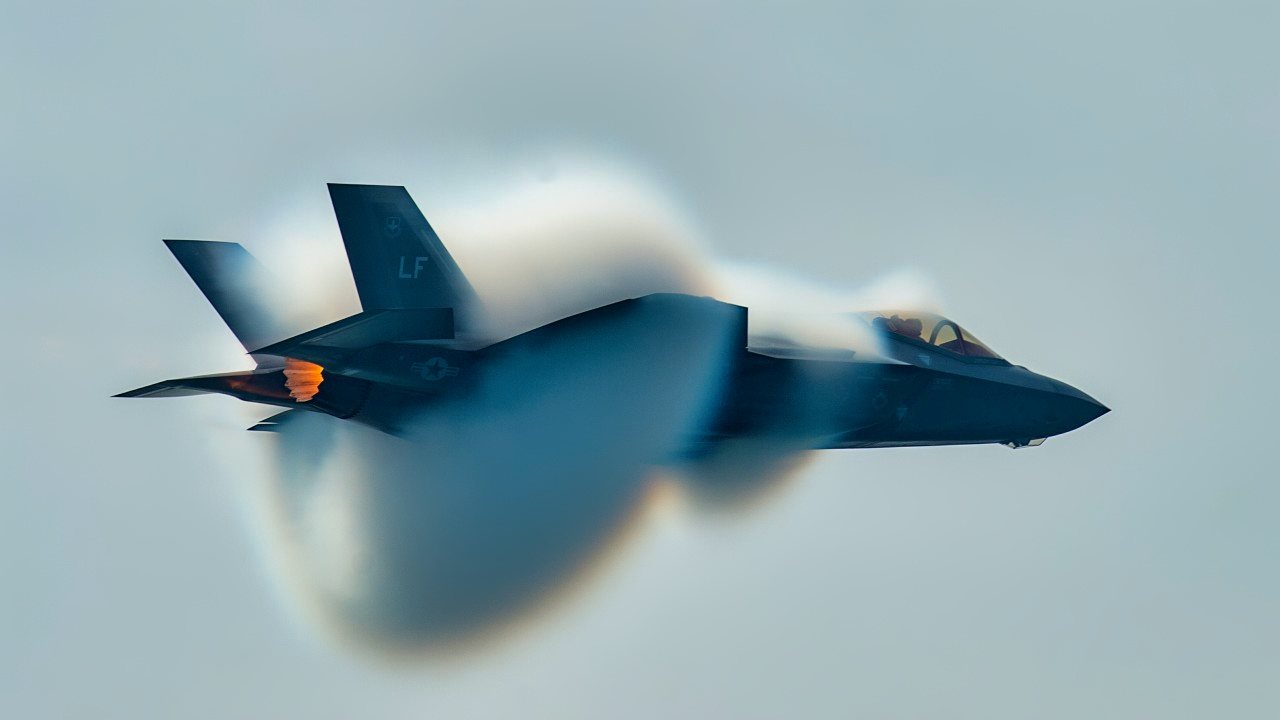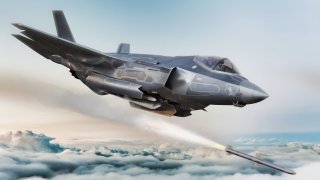5 Reasons the F-35 Fighter Is Unstoppable in the Sky
The F-35 Lightning II, an emblem of American aeronautical prowess, represents the pinnacle of fifth-generation fighter technology, amassing over 773,000 flight hours and serving 20 nations worldwide.
Summary: The F-35 Lightning II, an emblem of American aeronautical prowess, represents the pinnacle of fifth-generation fighter technology, amassing over 773,000 flight hours and serving 20 nations worldwide. This fighter jet, known for its stealth capabilities, is critical amidst rising tensions in regions like the South China Sea and Eastern Europe, ensuring survivability against advanced air-defense systems. Its versatility is unmatched, catering to the specific needs of the Air Force, Marine Corps, and Navy through distinct variants. The F-35 showcases remarkable speed and range, powered by dual F-135-PW-100 engines, enabling speeds over Mach-1.6. It's at the forefront of electronic warfare, equipped with cutting-edge avionics, including large touchscreens and a helmet-mounted display system, allowing pilots to view real-time data through the aircraft.
5 Things that Make the F-35 Fighter Unbeatable
The F-35 Joint Strike Fighter is perhaps the most recognizable fighter jet ever to fly the skies.
Since its introduction to service, the American-made fifth-generation platform has surpassed more than 773,000 cumulative flight hours.
The formidable platform is currently flown by 20 nations, making it an essential asset to the U.S., its allies and partner nations. For many years, America retained air superiority after introducing the F-22 Raptor.
However, both Beijing and Moscow possess their fifth-generation counterparts today and are equally invested in producing the world’s first sixth-generation fighter down the line.
Until then, the Raptor and Lightning II will serve as America’s leading fighter platforms.
The F-35’s top 5 qualities are outlined below.
Stealth:
Considering the advanced air defense and radar technologies in service with near-peer adversaries like China and Russia, possessing “stealth” is essential for any modern American fighter. As geopolitical tensions continue to mount in the South China Sea and eastern Europe alike, the F-25’s ability to survive in contested airspace is paramount.
Like the F-22 Raptor, the F-35 was designed to feature a minimal radar-cross section coated in radar-absorbent materials to reduce the chance of being detected by enemy aircraft.
The Lockheed Martin-built fighter was constructed to be a multi-role stealth fighter, meaning that it was specifically engineered to launch massive air attacks on both air-to-air and air-to-ground targets.
Versatility:
Perhaps the most outstanding quality of the Lightning II fighter is its versatility. Unlike the Raptor, which was developed to be flown by the Air Force alone, the F-35 was designed as a family of fighters. The Marine Corps, Navy and Air Force all possess modified Lightning II variants to fulfill their specific defense needs.
The F-35A has been referred to as the “runway queen” of the group as it operated like a traditional fighter. This low-cost variant requires roughly 8,000 feet of standard runways to take off properly and land. The F-35B is the Marine Corps’ Lightning II variant. As the most mechanically complex of the three, the F-35B features short take-off and vertical landing (STOVL) capability.

The Navy’s F-35C variant is carrier-capable, equipped with heavy-duty landing gear and a tail hook.
While in its “stealth” configuration, the Lightning II can sport four Aim-120 AMRAAM missiles for air-to-air missions or a combination of four AIM-120/GBU-31 JDAM smart bombs for air-to-ground missions.
The F-35 also can enter “beast mode,” which enables the platform to carry up to fourteen AIM-120 missiles for ground operations, two AIM-9x missiles for air-to-air missions or four Aim-120/9X missions coupled with six GBU-31s.
Range/speed:
Two F-135-PW-100 engines power the F-35 Lightning II, providing 40,000 pounds of maximum propulsion. This engine power gives each fighter a range of 1,200 nautical miles and allows the jet to reach speeds in excess of Mach-1.6 (times the speed of sound).
The F135-PW-100 was designed with two variants- the F-35A and F-35B use the CTOL version and the F-35B uses the two-cycle STOVL model.
Electronic warfare and avionics:
Unlike its predecessors, the F-35 features large touchscreens and a helmet mounted display system that enabled the pilot to look directly through the aircraft to see real-time information.
This capability, provided by the fighter’s Distributed Aperture System (DAS) and suite of mounted infrared cameras, is a huge bonus for pilots. The Lightning II is also equipped with an AN/APG-81 system active electronically scanned array (AESA) radar, a robust electronic countermeasures function.

In January, the Pentagon awarded Lockheed Martin a nearly $100 million contract to integrate the AGM-88G High-Speed Anti-Radiation Missiles (HARMs) on all three Lightning II variants. This formidable anti-radar missile destroys enemy radar and air defense systems.
This incorporation will be a paramount asset since electronic warfare plays a more prominent role in modern combat.
F-35 Adaptability:
The F-35’s ability to service data transmission between all Joint Strike Fighters- even those that fly for foreign militaries- is unique and cost-effective. The F-35 may be the most technologically advanced fifth-generation platform on the docket today.
However, as future fighters are developed, even newer technologies will naturally emerge. Thanks to the secure data link transmission, any improvements in technology or data sharing can be incorporated into the platform in later years. This critical capability will allow the F-35 to remain a relevant platform for a longer period.
All in all, the F-35’s worldwide reputation as a powerhouse in the skies is well-founded. The fighter’s stealth, speed, payload, avionics and electronic suite truly make it an unparalleled platform.
About the Author: Maya Carlin
Maya Carlin, National Security Writer with The National Interest, is an analyst with the Center for Security Policy and a former Anna Sobol Levy Fellow at IDC Herzliya in Israel. She has by-lines in many publications, including The National Interest, Jerusalem Post, and Times of Israel. You can follow her on Twitter: @MayaCarlin.
Image Credit: Shutterstock.


